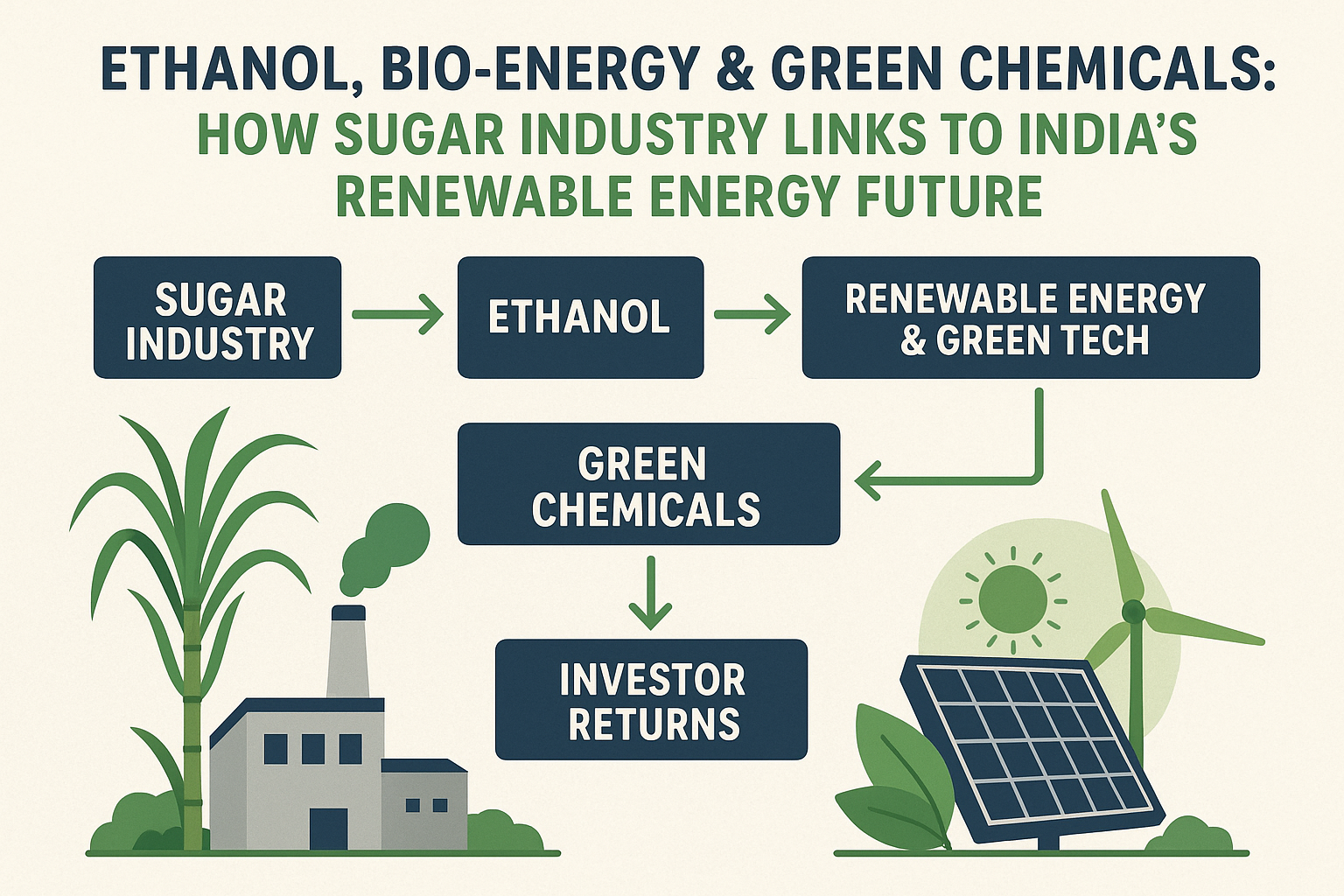By Rajesh Shukla, Chief Strategist (London School of Economics)
India is entering a new era with GST 2.0—a reform that is not just about simplifying taxes but about reshaping industries and creating new opportunities for investors. One of the most exciting transformations is happening in a sector that has been around for centuries: the sugar industry.
Traditionally viewed as a commodity-driven business, the sugar sector is now evolving into a clean energy powerhouse, contributing to ethanol, bio-energy, and green chemicals. This shift places sugar at the heart of India’s renewable energy and green technology movement.
From Sweetness to Sustainability
In the past, sugar mills were dependent on fluctuating global prices and cyclical margins. Today, under GST 2.0 and government policies, these same mills are diversifying into sustainable businesses that offer long-term, predictable revenue streams.
Ethanol: Driving India’s Bio-Fuel Revolution
- Ethanol, made from sugarcane, is now a key component of India’s fuel strategy.
- The government has set a target of 20% ethanol blending by 2030, cutting oil imports and reducing pollution.
- With GST 2.0, mills now benefit from faster invoicing and smoother tax credits, ensuring steady cash flow.
Investor Takeaway: Contracts with Oil Marketing Companies (OMCs) provide guaranteed demand and predictable returns.
Bio-Energy: Power from Waste
- Bagasse (sugarcane waste) is used to generate electricity through co-generation.
- Surplus power is sold to state electricity boards as renewable energy.
- Carbon credits add an extra layer of income.
Investor Takeaway: A stable cash flow business with green incentives built in.
Green Chemicals: Future-Ready Growth
- By-products like molasses are converted into industrial alcohol, bio-plastics, and eco-friendly chemicals.
- These are in high demand from pharma, packaging, and FMCG companies.
Investor Takeaway: A fast-growing sector aligned with global sustainability trends.
Renewable Energy & Green Tech: The Bigger Picture
The sugar industry’s transformation is part of India’s larger renewable energy strategy, supported by GST 2.0:
- Solar & Wind Power – lower tax rates and faster approvals.
- Electric Vehicles (EVs) – reduced GST on EVs and charging infrastructure.
- Green Hydrogen – the next frontier in industrial energy.
- Biofuels (Ethanol) – directly linked to sugar.
This integration makes the sugar sector part of a global investment theme in clean energy.
The Flow of Opportunity
Sugarcane → Ethanol / Bio-Energy / Green Chemicals → Renewable Energy & Green Tech → Investor Returns
This simple chain shows how a traditional agro-industry is being redefined into a strategic energy sector.
Why Investors Should Pay Attention
GST 2.0 is more than tax reform—it’s about building the future of India’s economy. For investors, this means:
- Stable, government-backed demand in ethanol and bio-energy.
- Sustainability-driven growth in green chemicals.
- Alignment with India’s energy security goals.
As a strategist, I believe this is a once-in-a-generation opportunity. The sugar industry is no longer just about sweetness—it is becoming a critical player in India’s renewable journey.
For those who want to align with India’s growth story, ethanol, bio-energy, and green chemicals are not side opportunities—they are the bridge between a traditional commodity and tomorrow’s green powerhouse.
Rajesh Shukla
Chief Strategist | London School of Economics

